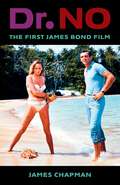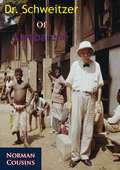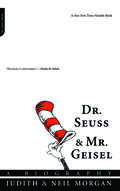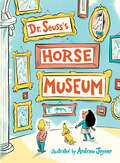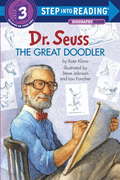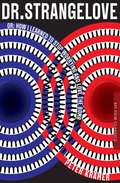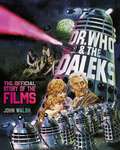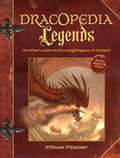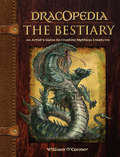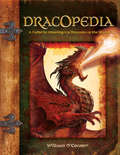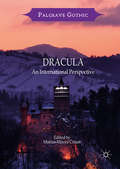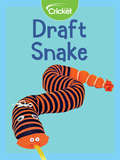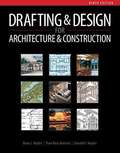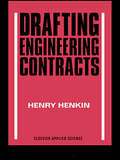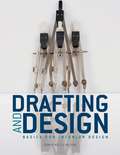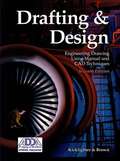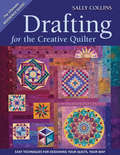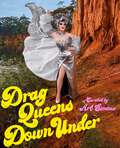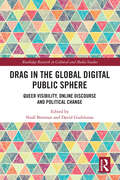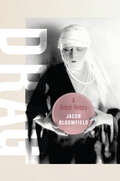- Table View
- List View
Dr. No: The First James Bond Film
by James ChapmanWhen Dr. No premiered at the London Pavilion on October 5, 1962, no one predicted that it would launch the longest-running series in cinema history. It introduced the James Bond formula that has been a box-office fixture ever since: sensational plots, colorful locations, beautiful women, diabolical villains, thrilling action set pieces, and a tongue-in-cheek tone. An explosive cocktail of action, spectacle, and sex, Dr. No transformed popular cinema.James Chapman provides a lively and comprehensive study of Dr. No, marshaling a wealth of archival research to place the film in its historical moment. He demonstrates that, contrary to many fan myths, the film was the product of a carefully considered transnational production process. Chapman explores the British super-spy’s origins in Ian Fleming’s snobbery-with-violence thrillers, examining the process of adaptation from page to screen. He considers Dr. No in the contexts of the UK and Hollywood film industries as well as the film’s place in relation to the changing social and cultural landscape of the 1960s, particularly Cold War anxieties and the decline of the British Empire. The book also analyzes the film’s problematic politics of gender and race and considers its cultural legacy.This thorough and insightful account of Dr. No will appeal to film historians and Bond fans alike.
Dr. Schweitzer Of Lambaréné
by Norman CousinsDR. SCHWEITZER OF LAMBARÉNÉ is in the nature of a personal appreciation of one of the towering figures of the twentieth century. Written on the basis of firsthand knowledge and observation, it is an informal, intimate account of Albert Schweitzer at work and in repose. Norman Cousins attempts to convey some idea of the burden Schweitzer has taken upon himself--and why he chose to take it. He also tells of Schweitzer's deep concern for the natural rights and the safety of the human community on earth.This book also portrays the people around Dr. Schweitzer--the young doctors and nurses at his Hospital--why they came to Lamberéné, the difficulties they face daily in their work, how they respond to the person of Schweitzer.Abounding in remembered detail, in anecdote and description, DR. SCHWEITZER OF LAMBARÉNÉ meets squarely and with intelligent understanding the stubborn legends and partial truths about the man, his work and his thought.Norman Cousins flew to Lambaréné to observe and visit; he remained to probe some of the deepest problems of modern civilization with a man whom many consider the conscience of the age.
Dr. Seuss & Mr. Geisel: A Biography
by Judith Morgan Neil MorganHorton, Thidwick, Yertle, the Lorax, the Grinch, Sneetches, and the Cat in the Hat are just a handful of the bizarre and beloved characters Theodor S. Geisel (1904-1991), alias Dr. Seuss, created in his forty-seven children's books, from 1937's And to Think That I Saw It on Mulberry Street to 1990's Oh, the Places You'll Go! During his lifetime Dr. Seuss was honored with numerous degrees, three Academy Awards, and a Pulitzer, but the man himself remained a reclusive enigma. In this first and only biography of the good doctor, the authors, his close friends for almost thirty years, have drawn on their firsthand insights as well as his voluminous papers; the result is an illuminating, intimate portrait of a dreamer who saw the world "through the wrong end of a telescope," and invited us to enjoy the view.
Dr. Seuss & Mr. Geisel: A Biography
by Judith Morgan Neil MorganHorton, Thidwick, Yertle, the Lorax, the Grinch, Sneetches, and the Cat in the Hat are just a handful of the bizarre and beloved characters Theodor S. Geisel (1904#150;1991), alias Dr. Seuss, created in his forty-seven children's books, from 1937's And to Think That I Saw It on Mulberry Street to 1990's Oh, the Places You'll Go! During his lifetime Dr. Seuss was honored with numerous degrees, three Academy Awards, and a Pulitzer, but the man himself remained a reclusive enigma. In this first and only biography of the good doctor, the authors, his close friends for almost thirty years, have drawn on their firsthand insights as well as his voluminous papers; the result is an illuminating, intimate portrait of a dreamer who saw the world "through the wrong end of a telescope," and invited us to enjoy the view.
Dr. Seuss and Mr. Geisel
by Judith Morgan Neil MorganHorton, Thidwick, Yertle, the Lorax, the Grinch, Sneetches, and the Cat in the Hat are just a handful of the bizarre and beloved characters Theodor S. Geisel (1904-1991), alias Dr. Seuss, created in his forty-seven children's books, from 1937's And to Think That I Saw It on Mulberry Street to 1990's Oh, the Places You'll Go! During his lifetime Dr. Seuss was honored with numerous degrees, three Academy Awards, and a Pulitzer, but the man himself remained a reclusive enigma. In this first and only biography of the good doctor, the authors, his close friends for almost thirty years, have drawn on their firsthand insights as well as his voluminous papers; the result is an illuminating, intimate portrait of a dreamer who saw the world "through the wrong end of a telescope," and invited us to enjoy the view.
Dr. Seuss's Horse Museum (Classic Seuss)
by Dr. SeussThis #1 New York Times bestseller is the perfect gift for the young artist in your life! A never-before-published Dr. Seuss non-fiction book about creating and looking at art! Based on an unrhymed manuscript and sketches discovered in 2013, this book is like a visit to a museum—with a horse as your guide! Explore how different artists have seen horses, and maybe even find a new way of looking at them yourself. Discover full-color photographic art reproductions of pieces by Picasso, George Stubbs, Rosa Bonheur, Alexander Calder, Jacob Lawrence, Deborah Butterfield, Franz Marc, Jackson Pollock, and many others—all of which feature a horse! Young readers will find themselves delightfully transported by the engaging equines as they learn about the creative process and how to see art in new ways. Taking inspiration from Dr. Seuss&’s original sketches, acclaimed illustrator Andrew Joyner has created a look that is both subtly Seussian and wholly his own. His whimsical illustrations are combined throughout with &“real-life&” art. Cameo appearances by classic Dr. Seuss characters (among them the Cat in the Hat, the Grinch, and Horton the Elephant) make Dr. Seuss&’s Horse Museum a playful picture book that is totally unique. Ideal for home or classroom use, it encourages critical thinking and makes a great gift for Seuss fans, artists, and horse lovers of all ages. Publisher&’s Notes discuss the discovery of the manuscript and sketches, Dr. Seuss&’s interest in understanding modern art, the process of creating the book, and information about each of the artists and art reproductions in the book.
Dr. Seuss: The Great Doodler (Step into Reading)
by Kate KlimoA Step 3 Biography Reader about Theodor Geisel and his transformation from a doodler into the beloved Dr. Seuss. Little Ted Geisel always had a sketchpad and pencil in hand. He was a Boy Scout with a penchant for creating zany creatures. He grew up with a love of books and words from his mother, and his inventor father spawned a wildly imaginative and perfectionist side. It's no wonder that these qualities led to the beloved work of Dr. Seuss, the Great Doodler. Follow his career as an ad man, political cartoonist, creator of forty-five indelible children's books, and Pulitzer Prize winner. Not bad for a lifelong doodler! Includes fun facts and several of Dr. Seuss's original sketches and artwork! Step 3 Readers feature engaging characters in easy-to-follow plots about popular topics. For children who are ready to read on their own.From the Trade Paperback edition.
Dr. Spock's Baby and Child Care, 9th Edition
by Benjamin SpockFrom the pediatrician whose advice has shaped parenting practices for more than half a century, comes the essential parenting book, fully revised and updated for a new generation. From the pediatrician whose advice has shaped parenting practices for more than half a century, comes the essential parenting book-fully revised and updated for a new generation. This timeless, classic bestseller has been revised by Dr. Robert Needleman, a top-notch physician who shares Dr. Spock's philosophy. All Dr. Spock's invaluable, time-tested advice is here, along with the most current medical practices and advances in health care, and a resource guide. More than ever before, this essential work will help all parents face their many challenges and responsibilities with new confidence and joy.
Dr. Strangelove: or - How I Learned to Stop Worrying and Love the Bomb
by Peter KramerStanley Kubrick's Dr. Strangelove or: How I Learned to Stop Worrying and Love the Bomb (1964) has long been recognised as one of the key artistic expressions of the nuclear age. Made at a time when nuclear war between the United States and the Soviet Union was a real possibility, the film is menacing, exhilarating, thrilling, insightful and very funny. Combining a scene-by-scene analysis of Dr. Strangelove with new research in the Stanley Kubrick Archive, Peter Krämer's study foregrounds the connections the film establishes between the Cold War and World War II, and between sixties America and Nazi Germany. How did the film come to be named after a character who only appears in it very briefly? Why does he turn out to be a Nazi? And how are his ideas for post-apocalyptic survival in mineshafts connected to the sexual fantasies of the military men who destroy life on the surface of the Earth? This special edition features original cover artwork by Marian Bantjes.
Dr. Who & The Daleks: The Official Story of the Films
by John WalshThe definitive guide to the making of the classic 1960s Dr. Who movies, lavishly illustrated and packed with insights into these beloved films.Dr. Who and the Daleks: The Official Story of the Films is the definitive guide to the making of Dr. Who and the Daleks and Daleks&’ Invasion Earth 2150 A.D. The first and only big-screen adaptations of the long-running TV series, the films, starring Peter Cushing as the titular time-traveller, are beloved by fans – and the Daleks, in glorious Technicolor, have never looked better. Author and film expert John Walsh has unearthed a treasure trove of archive material, interviews and stunning artwork, and takes us through the whole process of translating the metal monsters from small screen to big. In-depth information on the production, design, casting and special effects is accompanied by full-colour illustrations, including props, posters, and behind-the-scenes photography – making it the perfect gift for fans of the films.
Dracopedia Legends: An Artist's Guide to Drawing Dragons of Folklore (Dracopedia)
by William O'ConnorLearn to draw colossal dragons and legendary heroes!It was a stormy night in Northern Wales when I and my apprentice, Conceil, had to take shelter in an old stalkers cottage along Caernarfon Bay. A peat fire was lit, and our guide, Sir Geoffrey Guest, regaled us with ancient stories of dragons while, outside, the gale battered the coastline.... What follows is a retelling of classical legends, plucked from the folklore of cultures spread across time and around the world, from ancient Greece and China to Medieval England and Norse mythology. You'll discover the epochal dragons who reigned over snow and sea; those with wings and flaming maws; those who thwarted Beowulf in underground lairs; and those slain by Hercules' mighty sword.Dracopedia Legends presents 13 epic tales of heroes vanquishing dragons, accompanied by lavish dragon illustrations inspired by the myths. Acting as both a storybook and art guide, each chapter also includes in-depth instructions to reveal how to conceptualize, research and design every iconic battle scene, broken down into multiple stages so you can create your own commanding and evocative narrative paintings. Includes:13 tales of the most legendary dragons from around the worldInstructions for drawing and painting each climactic clash between hero and beastHow to design, sketch and develop illustrations into layered and detailed final paintingsThe fourth book in the best-selling Dracopedia saga!
Dracopedia The Bestiary: An Artist's Guide to Creating Mythical Creatures (Dracopedia)
by William O'ConnorUnleash the Beasts! For millennia historians, artists and scientists have chronicled their ideas and discoveries of mythological and magical monsters in encyclopedias known as bestiaries. From Asia to America, Japan to the jungles of South Africa, the vast menagerie of exotic and legendary creatures has populated the imaginations of all cultures for centuries. Beautifully illustrated and fantastically detailed, Dracopedia: The Bestiary is a modern, but no less unsettling reimagining of the ancient version. It is an A-to-Z artist's guide to animals of the legendary world. Some, like the griffin and yeti, may be familiar to you. Others--like the enigmatic questing beast and ferocious manticore--may seem new and strange. Some may even haunt your dreams. Inside the bestiary, you will find: Secrets of each animal's evolution--origins, habitat, anatomy, diet and more. Fantastic illustrations created using pencil sketches and digital coloring. Four-stage demonstrations taking you from concept and design to under-painting and finishing details. By drawing on the forms and features of more pedestrian animals, you'll learn how to give shape to the bizarre creatures that roam the depths of your imagination, adding to the bestiary of the ages.
Dracopedia: A Guide to Drawing the Dragons of the World (Dracopedia)
by William O'ConnorEverything you ever wanted to know about dragons, but were afraid to find out Fantasy artists will breathe easier to discover a less perilous alternative to drawing dragons from life. Dracopedia grants you safe, easy access to the world's most prominent dragon species, from tiny, innocuous feydragons to the ferocious wyvern. For years, artist William O'Connor has traveled the globe, studying dragons in their natural environments. His findings, field notes and sketches have been compiled for the first time into this single, beautifully illustrated compendium-a natural and cultural history of the beasts as well as a step-by-step drawing workshop. Details of the anatomy, behavior, habitats and legends of 13 major dragon families Heavily illustrated with field sketches, anatomical studies and gesture drawings Shows the start-to-finish creation of 13 striking paintings, illustrating key concepts that apply to every medium Dragons have terrorized and delighted humans for centuries-continue the tradition with Dracopedia. It's packed with inspiration for putting "fierce" into your fantasy art, as well as the facts to keep your dragons true to life.
Dracula: An International Perspective (Palgrave Gothic)
by Marius-Mircea CrişanThis volume analyses the role of Bram Stoker’s Dracula and its sequels in the evolution of the Gothic. As well as the transformation of the Gothic location—from castles, cemeteries and churches to the modern urban gothic—this volume explores the evolution of the undead considering a range of media from the 19th century protagonist to sympathetic contemporary vampires of teen Gothic. Based on an interdisciplinary approach (literature, tourism, and film), the book argues that the development of the Dracula myth is the result of complex international influences and cultural interactions. Offering a multifarious perspective, this volume is a reference work that will be useful to both academic and general readers.
Draft Snake
by Liz HuyckMake a snake that is fun to create and keeps out the cold by a drafty door.
Drafting & Design for Architecture & Construction (Ninth Edition)
by Dana J. Hepler Paul Ross Wallach Donald E. HeplerDRAFTING AND DESIGN FOR ARCHITECTURE AND CONSTRUCTION, 9th edition is written in a logical structure that presents architectural drafting and design concepts in the order usually practiced by professional architects. An emphasis on environmental safety, protective measures, expanded coverage of construction design and drawings and chapter objectives to alert the reader to important concepts allow readers to hone the necessary skills to create a complete set of drawing plans. The abundant appendices provide important reference material, career information, mathematical calculations, standard abbreviations and synonyms. Exciting new material on design principles and procedures along with new entries on smart homes, smart growth, recreational facilities, building information modeling, site planning, ecology, energy conservation, efficiency and sustainability has been added. This text also covers CAD in an introductory chapter along with a series of inserts throughout to provide examples of how CAD is used to perform specific architectural drafting functions
Drafting Engineering Contracts
by H HenkinThis E. & F. N. Spon title is now distributed by Routledge in the US and Canada This title available in eBook format. Click here for more information.Visit our eBookstore at: www.ebookstore.tandf.co.uk.
Drafting Fundamentals for the Entertainment Classroom: A Process-Based Introduction Integrating Hand Drafting, Vectorworks, and SketchUp
by Eric AppletonDrafting Fundamentals for the Entertainment Classroom: A Process-Based Introduction to Hand Drafting, Vectorworks, and SketchUp guides students through a syllabus-formatted semester of integrated drafting concepts and skills. This book links beginner visualization practices with fundamental software knowledge through step-by-step exercises and examples. By presenting hand drafting and Vectorworks through incremental exercises, students not only gain an understanding of the tools used in drafting but also learn why the tools, practices, and standards exist in the first place. SketchUp, a user-friendly 3D modeling program, is integrated into the various exercises to help readers visualize concepts and begin modeling their own ideas. By the end of the book, students will understand drawing construction techniques, United States Institute for Theatre Technology (USITT)-recommended graphic standards, and the typical drawings created for entertainment design, preparing them to dive more deeply into the further complexities and opportunities of Vectorworks and SketchUp. Drafting Fundamentals for the Entertainment Classroom is written to complement a 14- or 15-week semester of an Entertainment Drafting course. The book’s format also provides structure for independent and self-directed study.
Drafting and Design: Basics for Interior Design
by Travis Kelly WilsonUsing a residential design scenario that increases in scope from chapter to chapter and results in a complete set of working drawings, Drafting and Design: Basics for Interior Design teaches the art of drafting through hands-on application. Introducing essential drafting tools, equipment, and methods, the book is designed to help interior designers develop an understanding of space planning and leverage manual drafting skills to design usable and livable space.
Drafting and Design: Engineering Drawing Using Manual and CAD Techniques
by Clois E. Kicklighter Walter C. BrownWritten to meet the educational needs of both beginning and advanced students, Drafting & Design features comprehensive instruction in both manual (traditional) drafting and computer-aided drafting (CAD). Step-by-step, detailed drafting procedures are presented throughout the text to illustrate the tools and techniques of both methods. For each drafting task presented, manual and CAD procedures are given in sequence to explain both approaches to drafting.
Drafting for the Creative Quilter: Easy Techniques for Designing Your Quilts, Your Way
by Sally CollinsThe master quilting teacher presents the ultimate reference guide for drafting your own quilt designs—including 3 projects to test your skills!Quilt artist Sally Collins has helped countless quilters unleash their creative vision by sharing her vast knowledge of drafting. In this comprehensive guide, she offers detailed instructions on how to draft your own quilt blocks based on grids, circles, and various kinds of stars; how to design using mirrors, graph paper, pencil, and calculator; how to create your own variations of traditional blocks; and much more. The three projects featured in this volume are presented in order of difficulty so you can test new skills as you learn. With Sally’s easy methods, you will gain the confidence you need to draft and design your own creative ideas.
Drag Queens Down Under: Australia's drag superstars in glorious technicolour
by Art SimoneA glorious celebration of life in drag through the eyes of our most prominent drag superstars. Featuring a diverse range of artists from across Australia, with stunning photographs and stories about being as fierce as a drag queen, both on and off the stage. Written and curated by the iconic Art Simone, this anthology is a visual feast for the eyes for all fans of drag, cultivating authenticity and championing utter fabulousness.
Drag Queens Down Under: Australia's drag superstars in glorious technicolour
by Art SimoneA glorious celebration of life in drag through the eyes of our most prominent drag superstars. Featuring a diverse range of artists from across Australia, with stunning photographs and stories about being as fierce as a drag queen, both on and off the stage. Written and curated by the iconic Art Simone, this anthology is a visual feast for the eyes for all fans of drag, cultivating authenticity and championing utter fabulousness.
Drag in the Global Digital Public Sphere: Queer Visibility, Online Discourse and Political Change (Routledge Research in Cultural and Media Studies)
by Niall Brennan David GudelunasThis volume explores drag in global online spaces as a distinct departure from the established success, and limitations, of RuPaul’s Drag Race. Centered around discourses of LGBTQ+ visibility and political mobilization, the book addresses how these discourses have moved beyond the increasingly limited qualities of the television series to reconfigure the parameters of drag in emerging communities and spaces. By reconceiving of drag in new settings, this volume uncovers the crucial social and political potential for community-building in an increasingly fragmented and isolated global space. Chapters by a diverse team of authors delve into the recognition of new articulations of LGBTQ+ visibility and political mobility through drag in online space; the implications of drag celebrity for issues such as labor and profit in the digital sphere; the (re)appropriation of mainstream drag in emerging online environments and communities; and the reverberations of drag in underrepresented and under-researched areas of the world. Offering new insights into the rise of drag in a global digital public sphere, this book will be of interest to scholars and students of media studies, cultural studies, digital media and cultural studies, critical race studies, gender studies, sexuality studies, queer theory, film, and television studies.
Drag: A British History (Berkeley Series in British Studies #23)
by Jacob Bloomfield"A must-read for anyone interested in the history of drag performance."—Publishers WeeklyA rich and provocative history of drag's importance in modern British culture. Drag: A British History is a groundbreaking study of the sustained popularity and changing forms of male drag performance in modern Britain. With this book, Jacob Bloomfield provides fresh perspectives on drag and recovers previously neglected episodes in the history of the art form. Despite its transgressive associations, drag has persisted as an intrinsic, and common, part of British popular culture—drag artists have consistently asserted themselves as some of the most renowned and significant entertainers of their day. As Bloomfield demonstrates, drag was also at the center of public discussions around gender and sexuality in the nineteenth and twentieth centuries, from Victorian sex scandals to the "permissive society" of the 1960s. This compelling new history demythologizes drag, stressing its ordinariness while affirming its important place in British cultural heritage.
